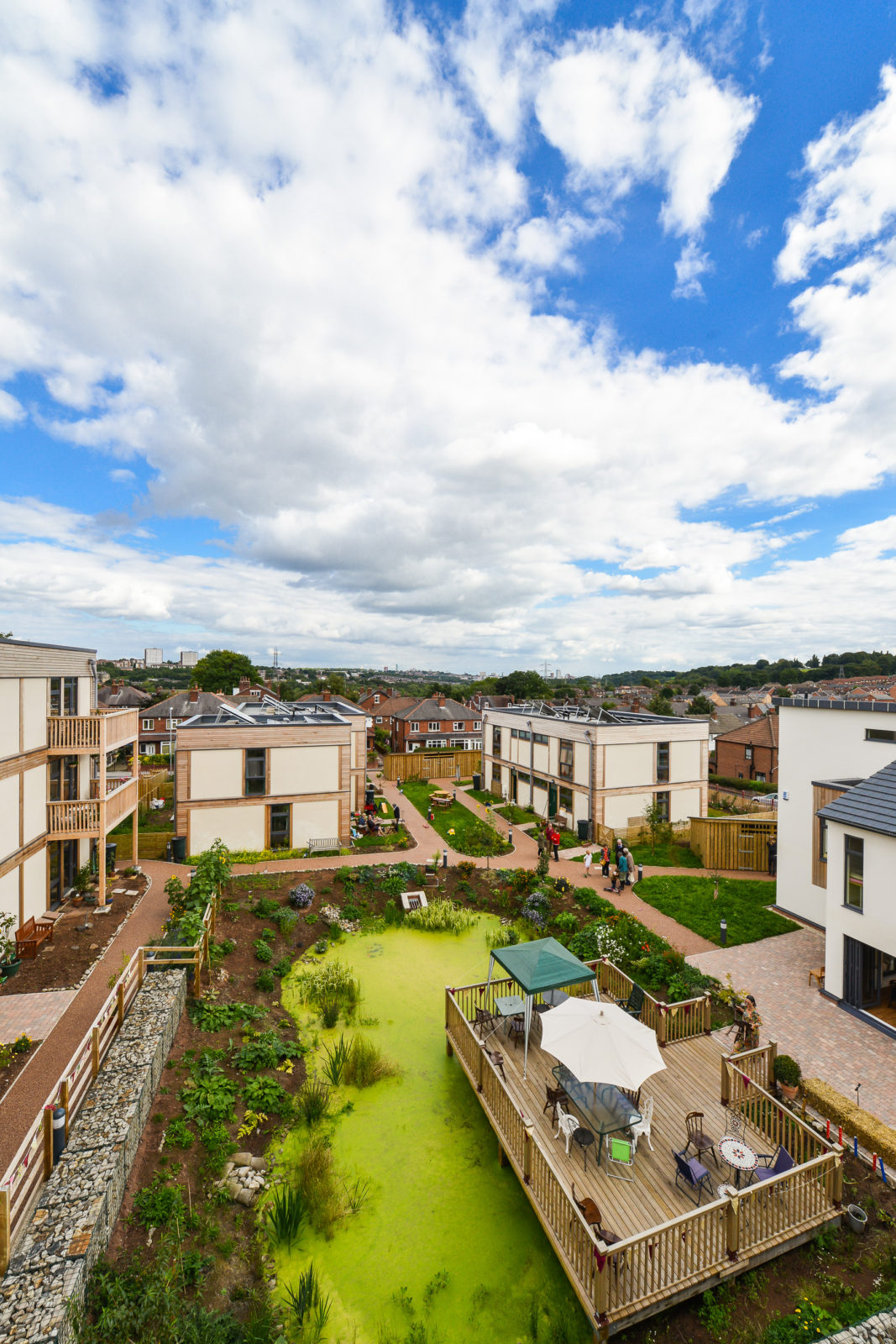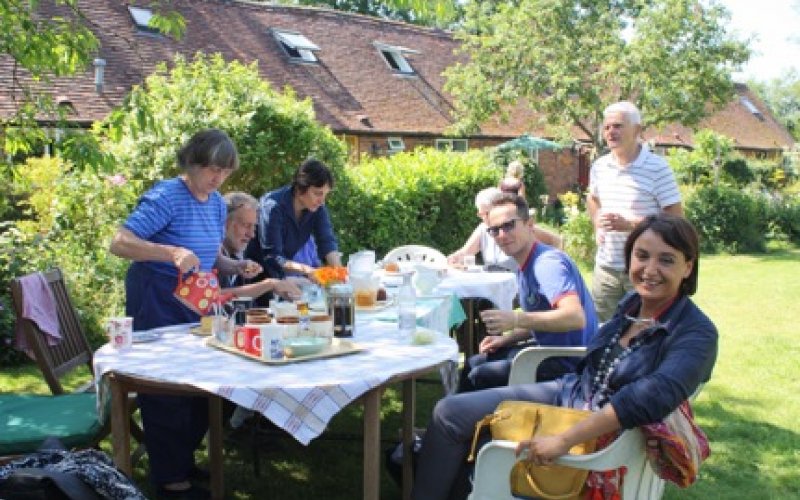Cohousing in the UK and Worldwide
Cohousing in the UK
Cohousing started to develop in the UK at the end of the 1990s. The movement has gradually built up momentum and there are now 11 new build and around 20 retrofit cohousing communities. A further 65+ cohousing groups are developing projects and new groups are forming all the time. A national register of interest was started recently and already has over 1000 people seeking opportunities in cohousing.
Cohousing communities in the UK currently range in size from around 10 households to around 40 households. Most communities are mixed communities with single people, couples and families but some are specifically for people over 50 and there is increasing interest in communities of common interest such as women only or LGBT groups.
The communities themselves range from new developments built to modern eco standards to conversions of everything from farms to former hospital buildings and are in urban, rural and semi-rural locations. Some have very large land holdings as part of the community, others very little. Most of the initial Cohousing Projects were self funded by the residents as there was no public funding available for cohousing. Increasingly, communities are now working in partnership with other agencies to co-create their Cohousing using using a range of legal and financial structures to enable them to offer different tenure types including rental and mutual homeownership options.
UK Cohousing has recently been working with the DLUHC in England, and following the highly successful Community Housing Fund, a further £20m was committed to the Community Led Housing sector in March 2024.
In Wales, UK Cohousing has contributed to the Welsh Government Expert Group on housing an ageing population which has recognised Cohousing as important in widening choice of housing options and recommends ensuring that there is financial and professional support and advice available to facilitate community led housing solutions.
A Strategy for Housing Scotland’s Older People 2012-2021, recognises Cohousing by the Scottish Government and states they are keen to encourage the development of new and innovative models of housing that enable older people to maintain their independence in the community.
Northern Ireland has an active intergenerational Cohousing group, who are promoting Cohousing in the country.
UKCN has member groups in all Countries within the UK. Given the diversity of laws and governments within the UK we have enabled specific forums to be set up for Wales, Scotland, Northern Ireland and England within our membership area My UKCN.
The UK Cohousing leaflet gives a comprehensive overview of cohousing: what it is, how to do it, where to see it.



Cohousing worldwide
Cohousing began in Denmark. The first cohousing community was built in 1972 for 27 families, close to Copenhagen. Since then cohousing has spread rapidly, and today 1 percent of the Danish population, about 50,000 people live in cohousing.
Sweden also has a long-standing cohousing tradition. The Swedish feminist movement played a key role to promote cohousing as a way to share common chores more equally between the genders. Today, the association Kollektivhus Nu (“Cohousing Now”) is successful in promoting the idea across the country. In Sweden most of the Cohousing projects are state-owned, as they were developed as part of a large societal project of an active welfare state; recently built cohousing however is now also privately owned.
The Netherlands‘ first cohousing (“Centraal Wonen”) was built in the mid-70s. Today there are more than 100 Centraal Wonen projects in the Netherlands. The Netherlands have created a particular type of cohousing model, which is based on the organisation of large cohousing communities into clusters of 5 to 10 units. Each of these clusters has its own common facilities and the right to choose its new members, however, there is one large commonly shared building for parties, meetings etc. Around half the cohousing projects in the Netherlands are large scale. There are some 300 senior cohousing communities (“Groepswonen van Ouderen”) in the Netherlands.
In Germany the opportunity of the ‘baugruppen’ model for groups to access land has led to significant growth in Cohousing; there are more than 150 Cohousing projects in Berlin’s region alone, giving rise to the of Berlin being a worldwide centre for Cohousing.
Cohousing is now growing in the rest of Europe, namely France, Spain, Belgium, and Italy. In Italy two types of cohousing organisations have emerged Cohousing Venture, a private cohousing consultancy firm, and CoHabitando and CoAbitare, both non-profit companies.
The Danish term bofællesskab (living community) was introduced to North America as Cohousing by two American architects, Kathryn McCamant and Charles Durrett.
Since the first cohousing community was completed in the United States, Muir Commons in Davis, California, now celebrating 25 years, more than 160 communities have been established in 25 states, with more than 125 in development. The Cohousing Association of the US is the main resource point.
Cohousing is also gaining popularity across Canada, Australia, New Zealand and Japan.
